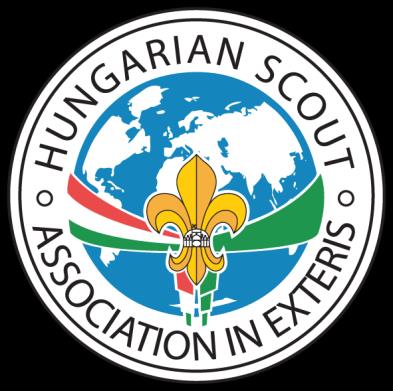

The unique resource value of the collection stems from the historical fact that the continuity of Hungarian scouting established in 1910 was in fact maintained by the émigré Hungarian scouting movement worldwide for more than four decades, from 1948 to 1989, in a period when it was prohibited in communist Hungary. According to Hungarian émigré scout leaders, the movement was intended to serve a two-front struggle of cultural resistance: on one hand against the official forgery of “the real” national heritage in communist Hungary; and on the other against the linguistic and cultural assimilation of Hungarian émigré youth within the multi-ethnic environment of some 20 countries of 4 continents worldwide.
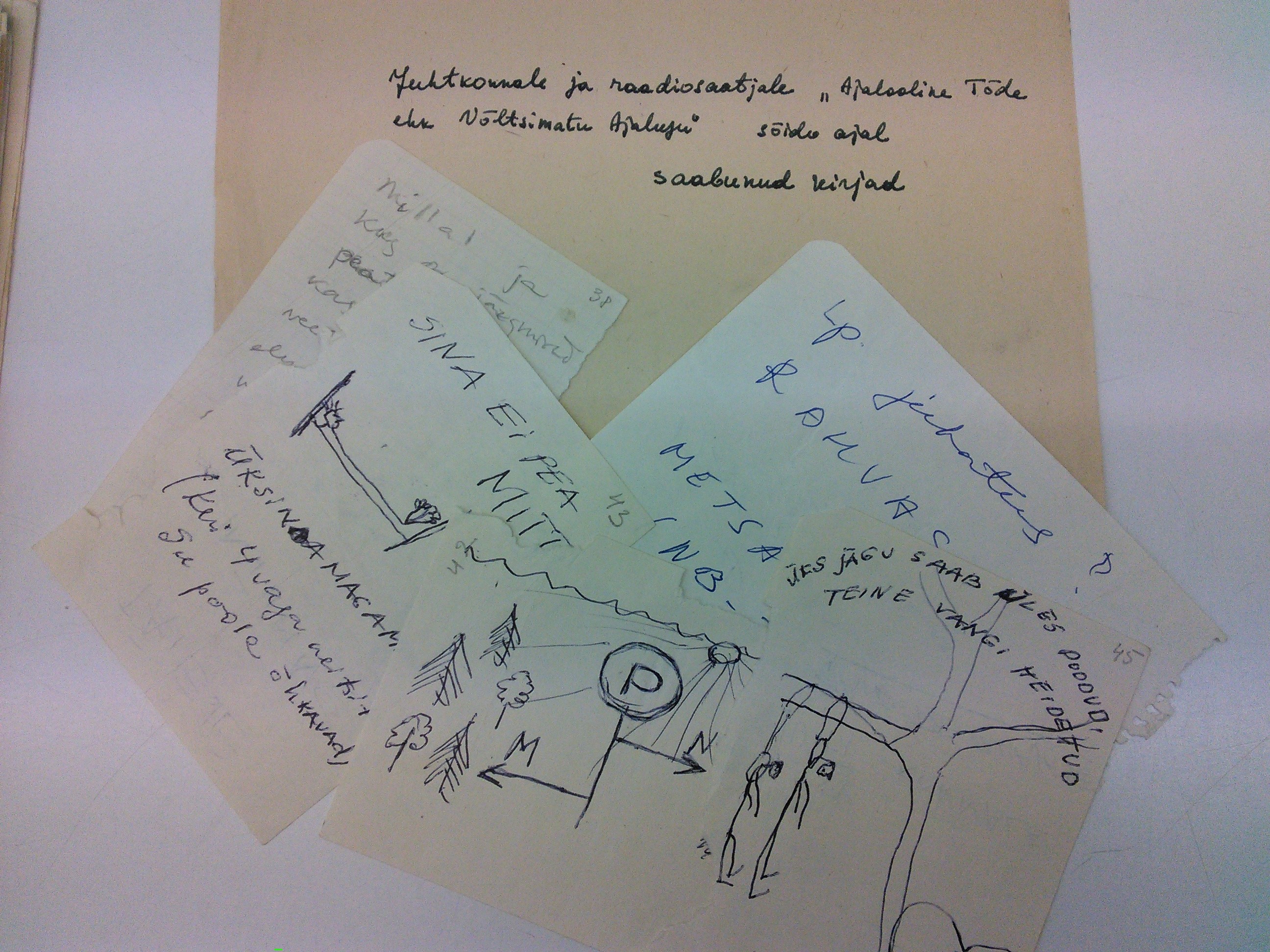

The Circle of History Students was a society for history students and lecturers at the University of Tartu during Soviet times which was officially part of the Students' Scientific Union. Although it was an official organisation, the Circle of History Students offered space for relatively free discussions between students and lecturers. It was a breeding ground for the growing protest spirit in the late 1980s. The Circle of History Students archive, which is preserved today in the National Archives of Estonia, contains various documents about its activities. Although it followed the formal rules for Soviet public speaking, these documents also display ironic and critical attitudes towards the regime, and reflect the free atmosphere for research and communication in the society.
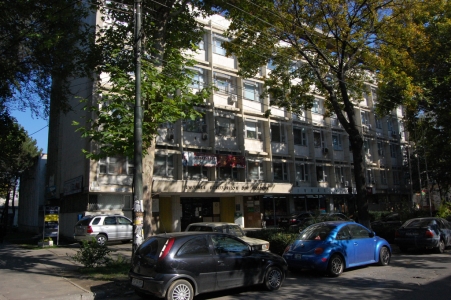

The present collection comprises a series of archival materials relating to the activities of the Moldavian Writers’ Union (MWU) and spanning the period from the early 1950s to the late 1980s. The materials in this collection were selected from Fond No. P-2955 (Uniunea Scriitorilor din Moldova), which is currently held in the Archive of Social-Political Organisations of the Republic of Moldova (AOSPRM) in Chișinău. The collection files mainly focus on a number of Party meetings, writers’ congresses and national conferences which discussed significant issues related to the local cultural heritage, the “language question,” and the relations between the literary milieu and the Soviet regime.
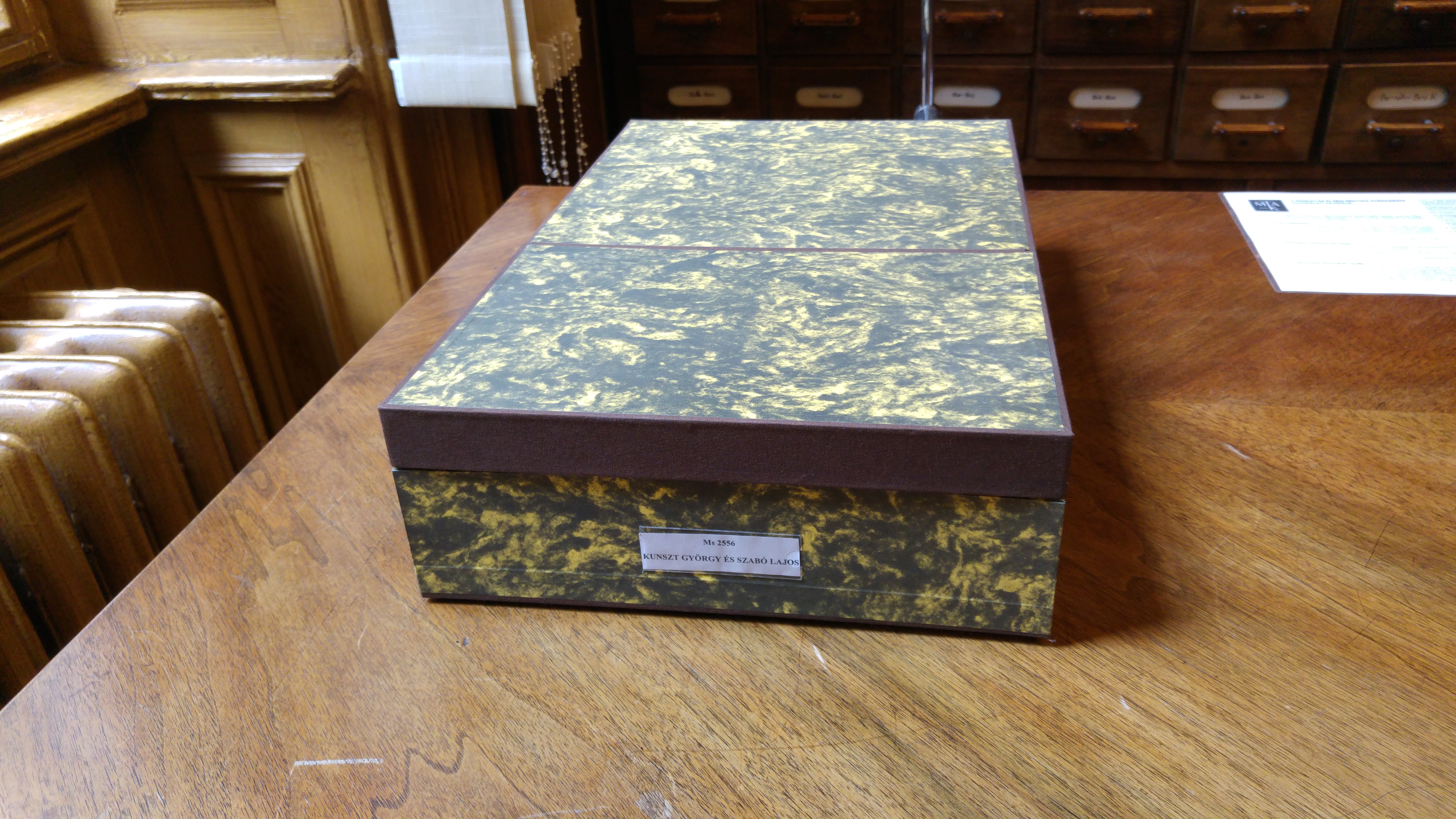

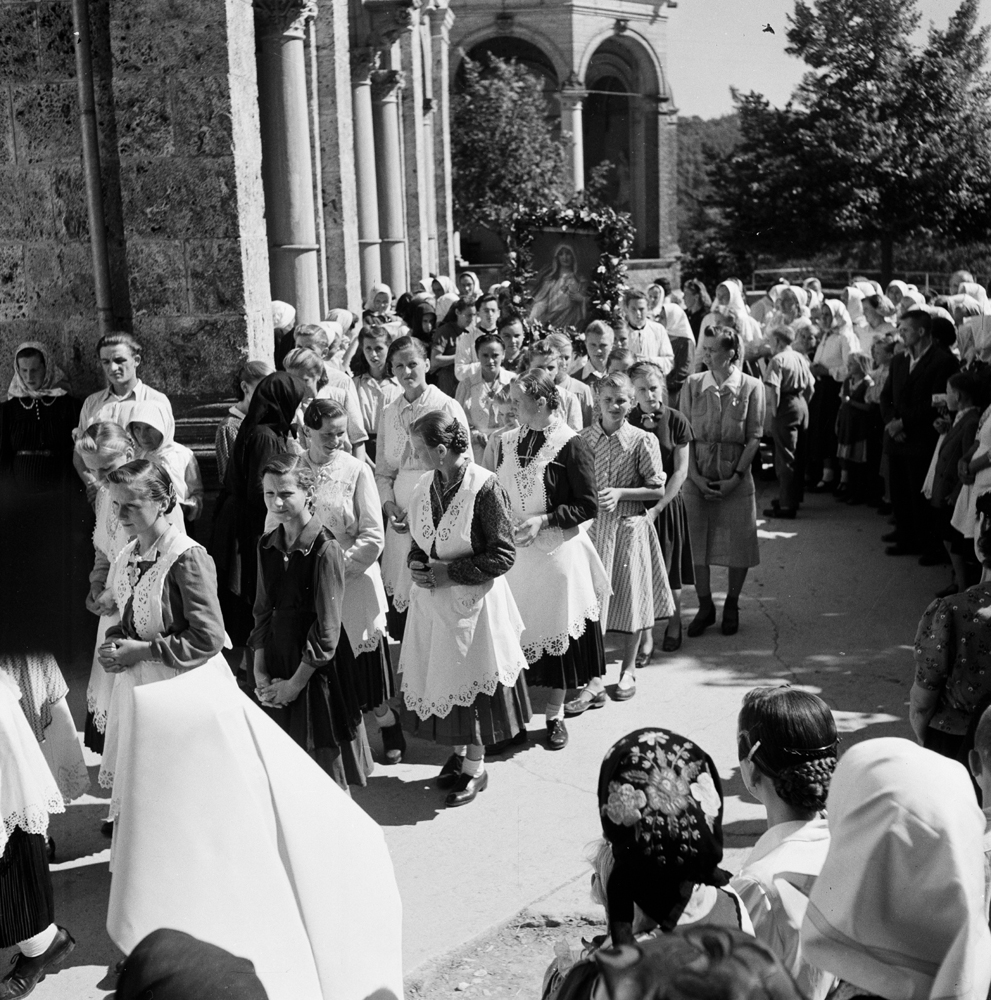

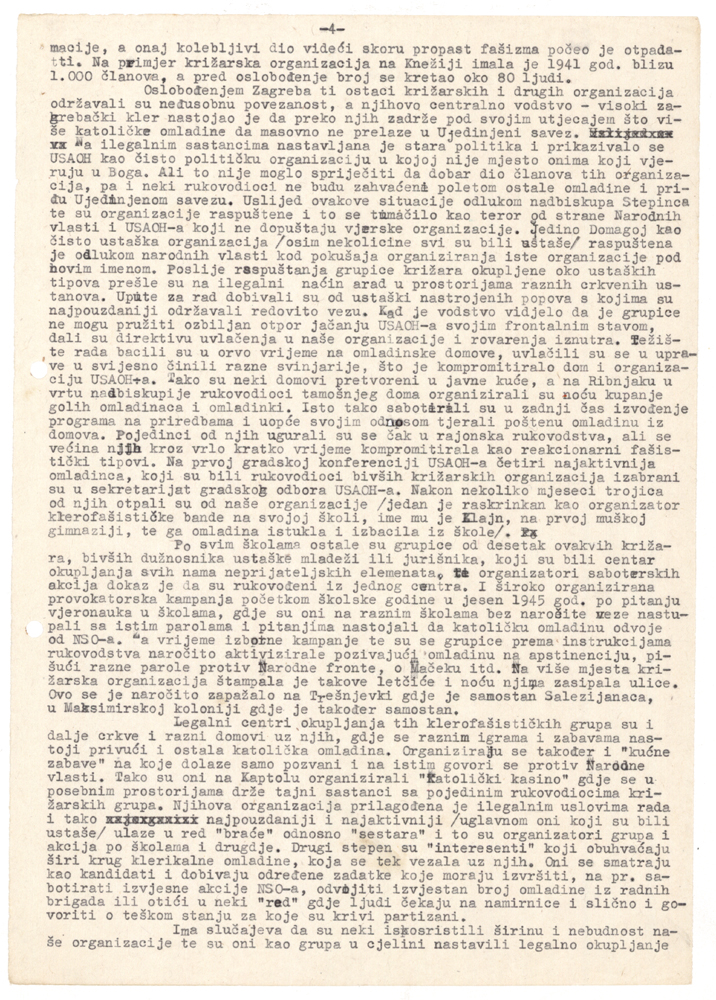
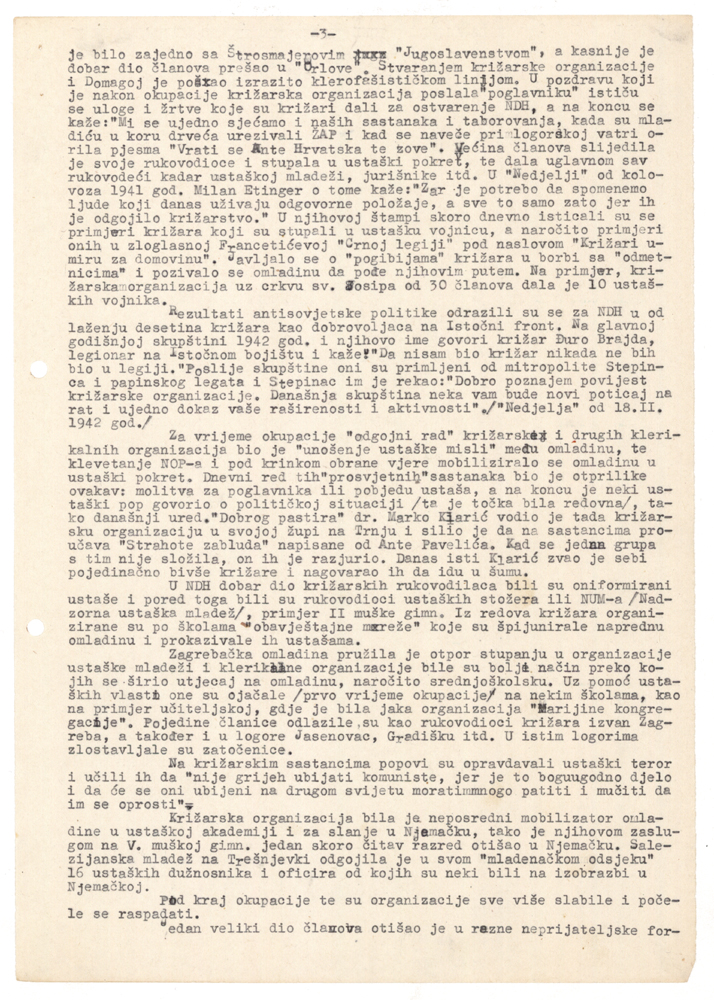
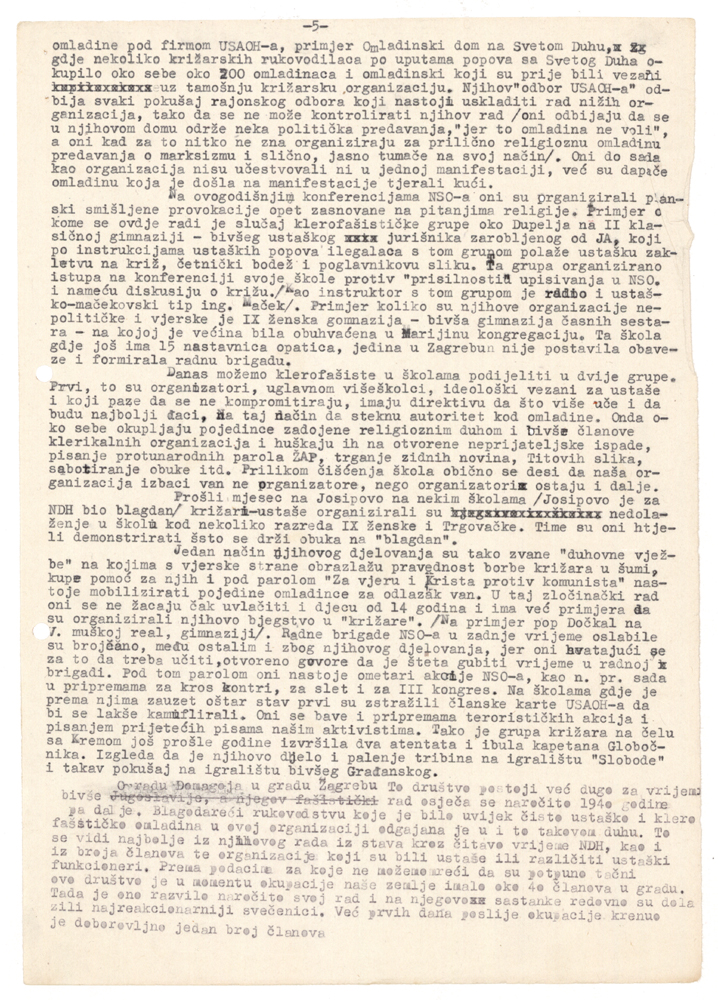
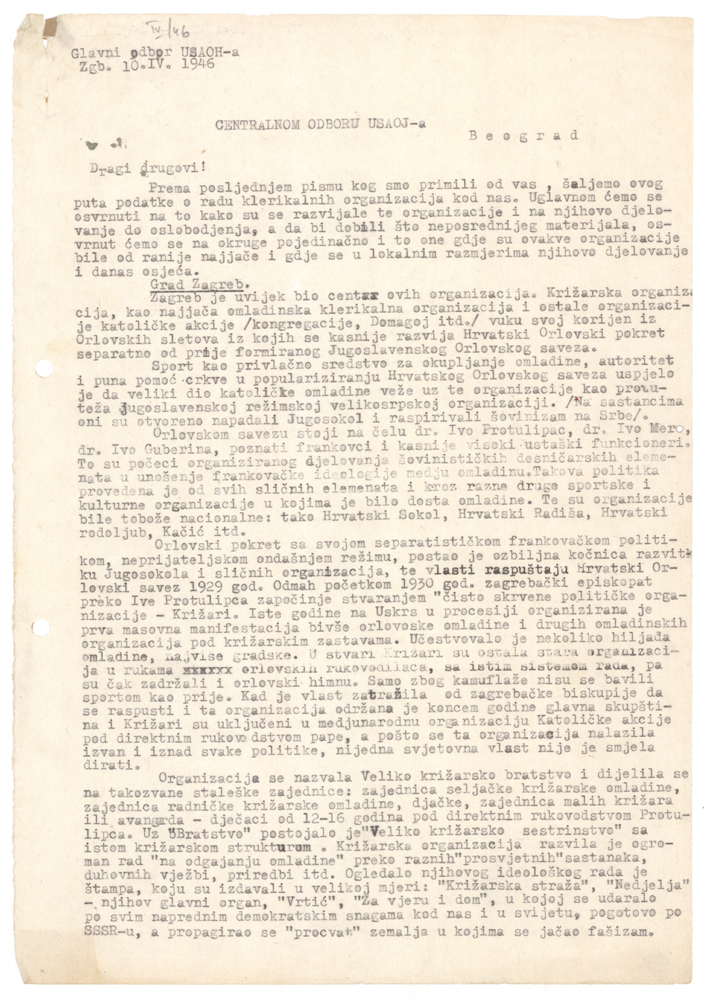
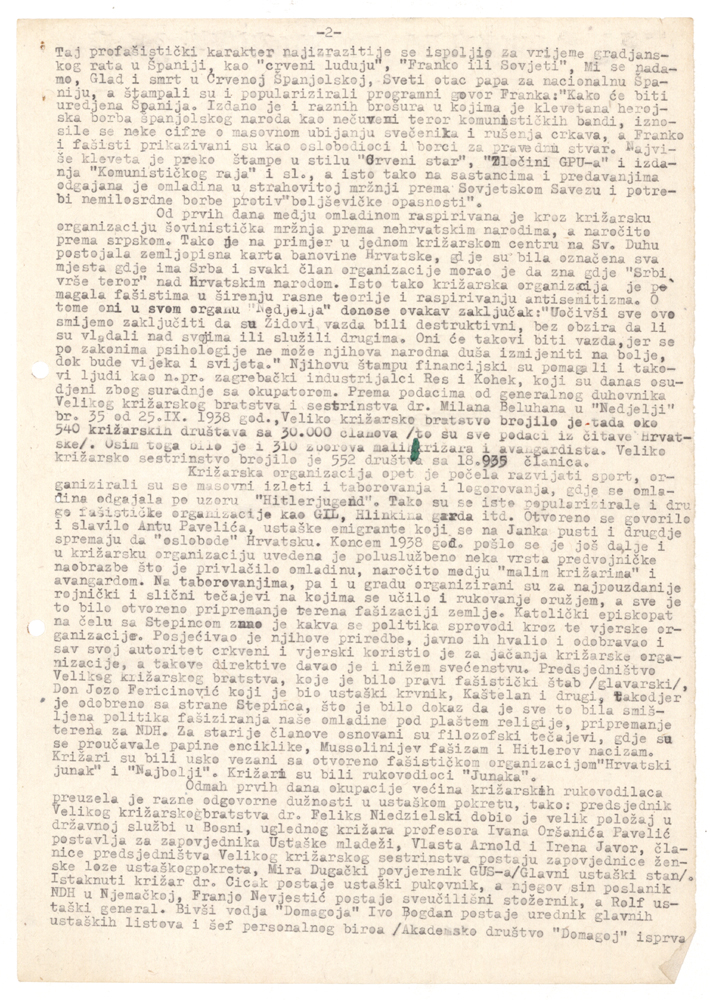
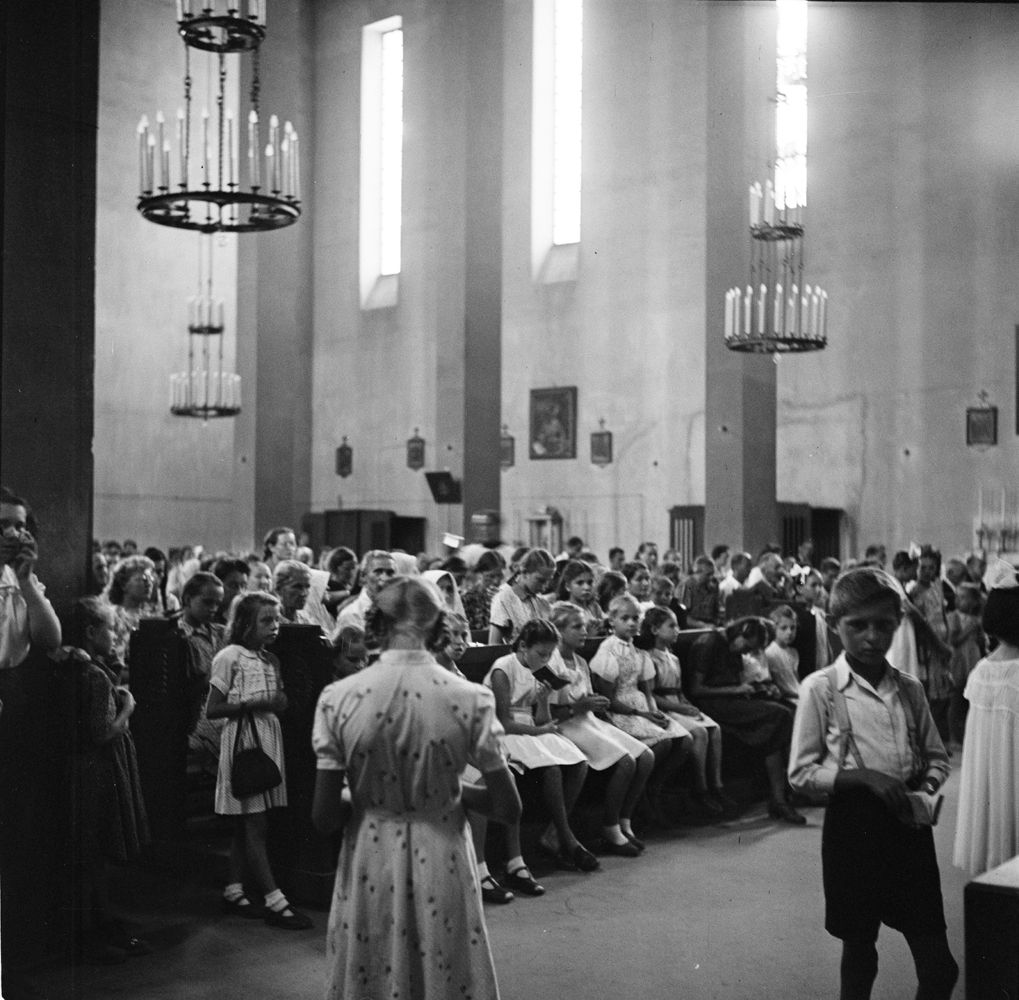
This is a document that the Main Committee of the Alliance of the Communist Youth of Croatia (ACYC) from Zagreb sent to the Central Committee of the ACY of Yugoslavia in Belgrade with information on the activities of the Catholic Church and its organizations (the Crusaders), who were active in that period, and their influence on the youth. Although the report elaborated on the activities of the Church and its organizations since 1930 and during the period of the Independent State of Croatia (NDH), this section refers to the period from 1945 to 1946. The review of opposition activity is shown by administrative and territorial criteria: the city of Zagreb, Varaždin County, Bjelovar County, Osijek, and Dalmatia. In the report, the activities of young people in church organizations and associations are explicitly defined as opposed to the regime, and these youth groups, under the leadership of priests, are also associated with affinity for the Ustasha regime. The document describes the impact of the Catholic Church on the youth in youth halls, schools, house parties and various church activities. In this report, emphasis was placed on the activities of youth choral societies or church choirs under the guidance of nuns or priests and gatherings of young people in the associations such as "Mary's Congregation," "Mary's Daughters," "Sacred Heart of Jesus," "St. Joseph," etc.
Through the ACYC as their transmission, the authorities responded to these phenomena in an extremely negative manner, attempting to halt the Catholic Church's influence on young people and suppress activities contrary to communist ideology, which were in fact most prominently carried out by the Catholic Church.
The document was drawn up by the ACYC Main Committee, whose archival records, along with the records of other so-called socio-political organizations, were until 1995 a part of the Archives of the Institute of History of the Croatian Workers' Movement/Institute of Contemporary History. In July of that year, the archives were handed over to the Croatian State Archives (CSA), where they are kept today. It is not known whether this document has been used by researchers.
The archives are regularly used by the researchers for scholarly publications, which was the case for this report as well.


 List of Books and Newspapers Which Were to Be Urgently Prohibited and Prevented from Further Distribution, ca 1946. Manuscript
List of Books and Newspapers Which Were to Be Urgently Prohibited and Prevented from Further Distribution, ca 1946. Manuscript
This is an undated, typewritten five-page document from the mid-1940s. The document was prepared by the Public Prosecutor’s Office in Zagreb. The list contains approx. 150 authors and books which were to be urgently banned from further distribution. The authors on the list shared different worldviews, but the variety of the literary genres on the list indicates the extent to which the communist authorities endeavoured to halt literary production of all those, whose work and values failed to adhere to the communist ideology.
Iljko Karaman took the document illegally from the Public Prosecutor's Office and stored it in his home collection, which ended up at the Croatian State Archives in 1992. The material is available for research and copying and was used in the publications by Deniver Vukelić and Josip Grbelja as sources for studying the postwar communist censorship.
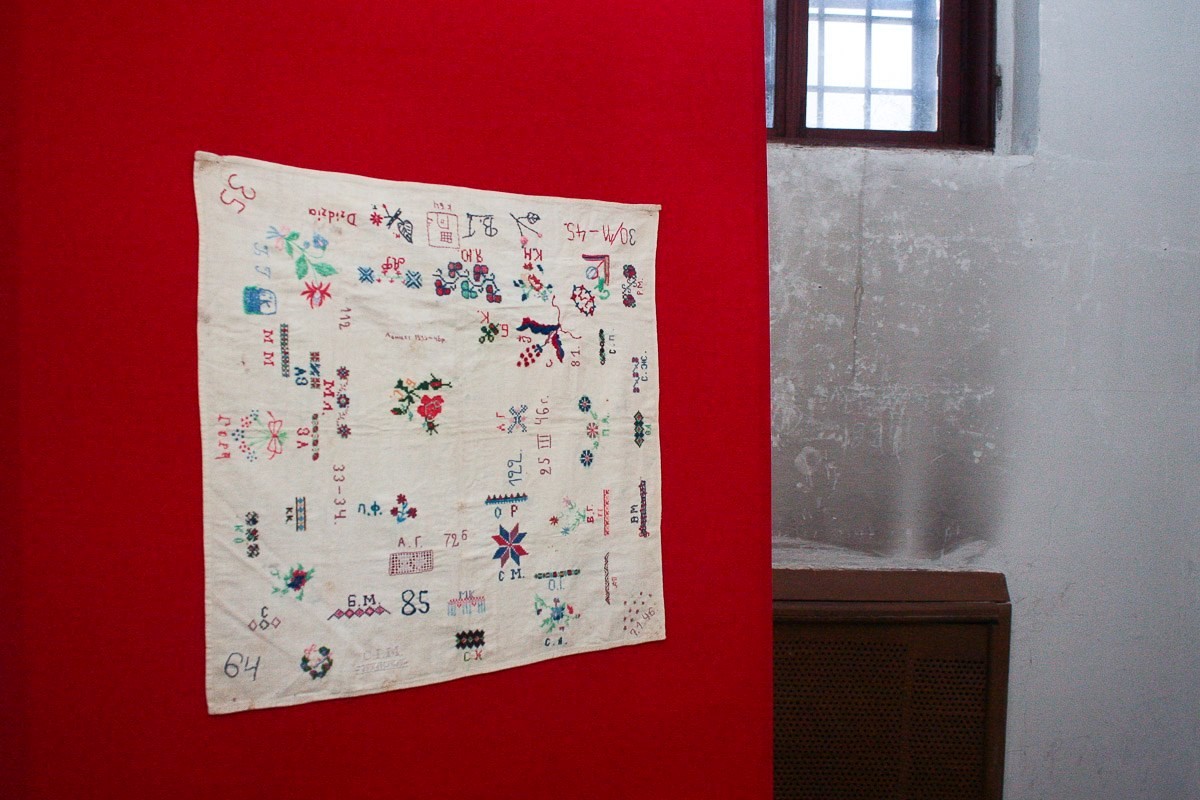

This embroidered handkerchief was created by the harpist Viktoriya Poltaryeva and almost 40 female prisoners imprisoned at the Prison on Lonskogo St. in 1946. Museum curators count this among featured items, as each woman left her own unique design and initials, as well as cell number. The piece was donated to the museum by her son, Petro Poltaryev, who is also a musician like his mother. For many years, this item remained in the private archives of the Poltaryev family and is reminder of the complex and fraught relationship the Soviet authorities had with creatives, even in official ranks.
This piece is a vibrant rendering of Poltaryeva’s nine months at the prison. The women marked dates of significance when they might be missing their families and loved ones most, such as January 7, 1946, or Christmas by the Julian calendar. Given that this handkerchief was made by so many hand, each contribution was different in style, regional motifs and sewing techniques. Also important to remember are the conditions under which these women worked on this piece, which would have been forbidden, and how they managed to conceal the handkerchief from multiple searches, moves from cell to cell, and floor to floor. Needles would have been fashioned from fish bones, the fabric cut from someone’s dress, the thread pulled from the clothing they wore.
Unfortunately, little is known about the women who were incarcerated alongside Poltaryeva, and considerable detective work would have to be done in order to find out who stood behind the many initials preserved on this handkerchief.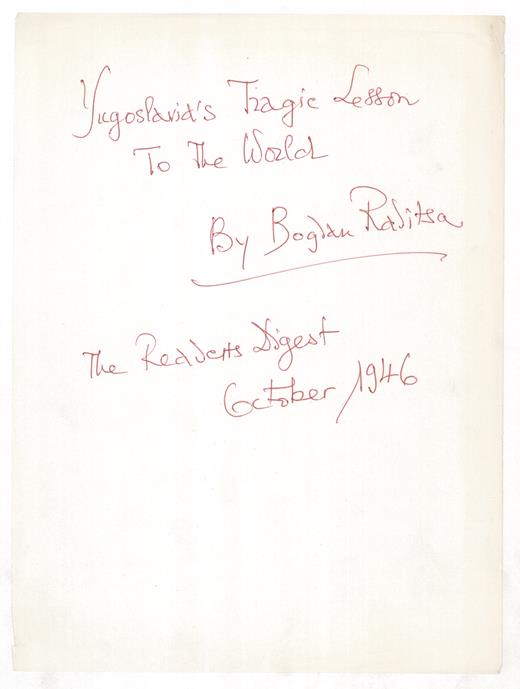

Radica wrote this article in October 1946 in New York, after his escape from Yugoslavia, in which he described the terror of the revolution carried out by the Yugoslav communists. It was later published in a review called Reader’s Digest. On account this and other articles published in the American press, the Yugoslav regime banned all his works. In this article printed in the newspaper that had a large readership and reach, he was the first person who revealed this information on revolutionary events in Yugoslavia to North America and the West. The article was translated into numerous other languages, and was published in Japan in the Japanese language. He received a writer’s fee of $5,000 for the article.
Radica introduced the term “useful innocents”, a phrase unknown in the American political culture. He considered himself and other democrats from Croatia and Yugoslavia useful innocents who had an illusion that communists would not succeed to seize absolute power in Yugoslavia. They believed naively that postwar Yugoslavia would be a democratic and federal state, not a communist dictatorship. In the beginning, the communists gathered various political representatives to get the support of wider population.This kind of political organization was called the Popular Front in the postwar communist world and in Yugoslavia (Narodna fronta).
The manuscript of the book was written by Bogdan Radica during his time in exile. It was finally published in 1974 in Barcelona and Munich, by the emigrant publishing house Hrvatska revija. He also collected his own articles published in the American press, his memoirs from Croatia and Yugoslavia covering the period from November 1944 to May 1946, and his notes from Izgnanički dnevnik in which he had made note on his journey from Italy and America. After the Croatian Spring in 1971, following conversations between the editor-in-chief, Vinko Nikolić and Radica in New York, they both decided to print the book. Radica decided to do that in order to explain what are the roots of “the newest Croatian catastrophe” in Tito’s Yugoslavia. In the book, he pointed out the fear and repression of the Communist revolution in Croatia.
Croatia survived the strongest level of repression because it demonstrated much more resistance than the other Yugoslav regions. In the book, Radica describes the situation during those revolutionary days in Zagreb and his hometown Split. He described the killings and jailing of people in those cities, among whom there were many respectable people from public life. Hence, he coined the phrase “great fear in Croatia” to describe the revolutionary terror. When he decided to flee Croatia and Yugoslavia, he sent his wife a telegram importantly titled “I have left Tito's paradise forever.”
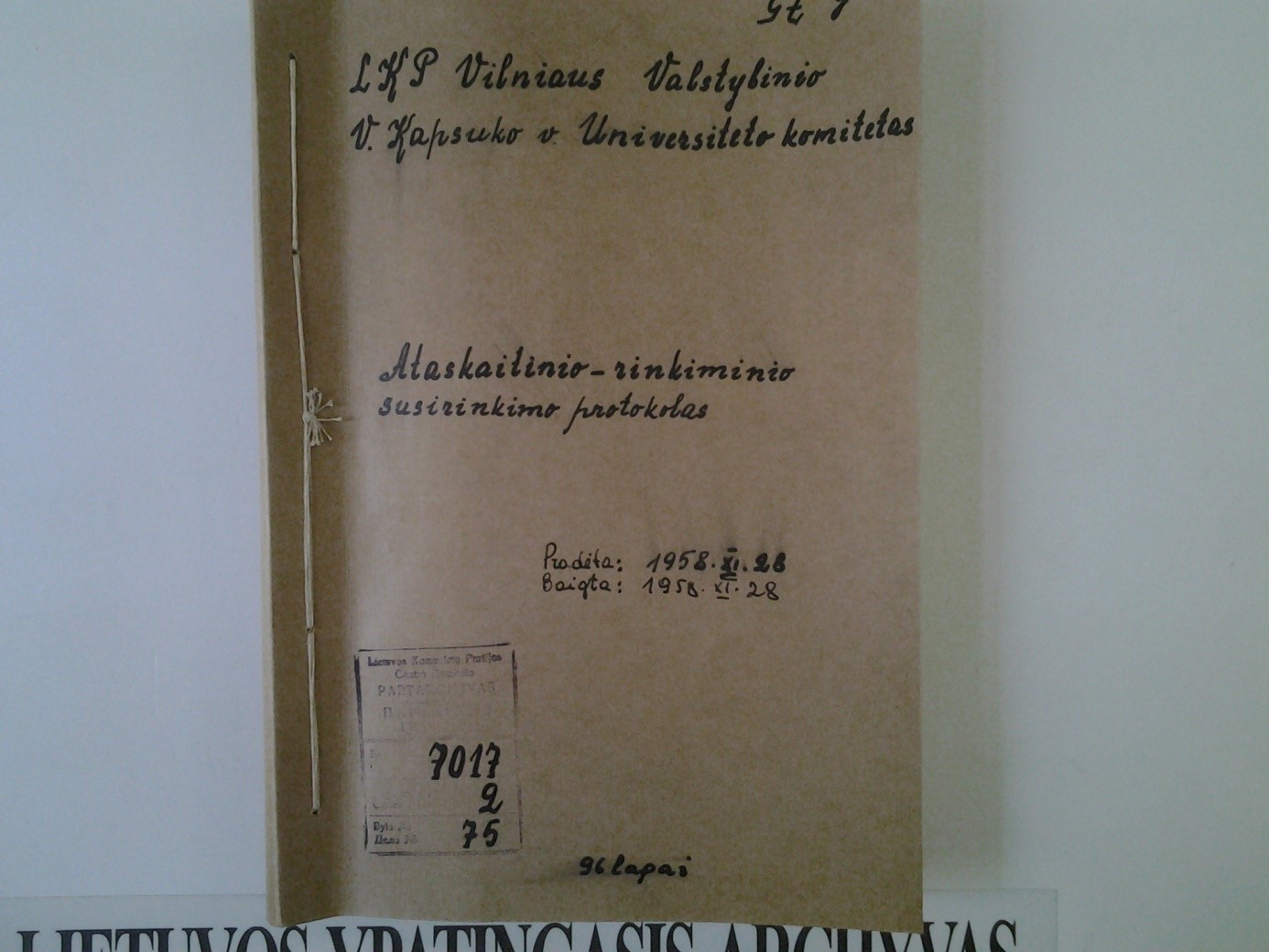

The Vilnius University Party Committee collection reflects the official policy and attitudes towards teachers, researchers and students. The university administration and Party Committee tried to control the educational process and the creative expression of scholars and students. On the other hand, documents from the collection help us to better understand the creative ambitions of Lithuanian researchers and even students, which did not always comply with the official ideology.
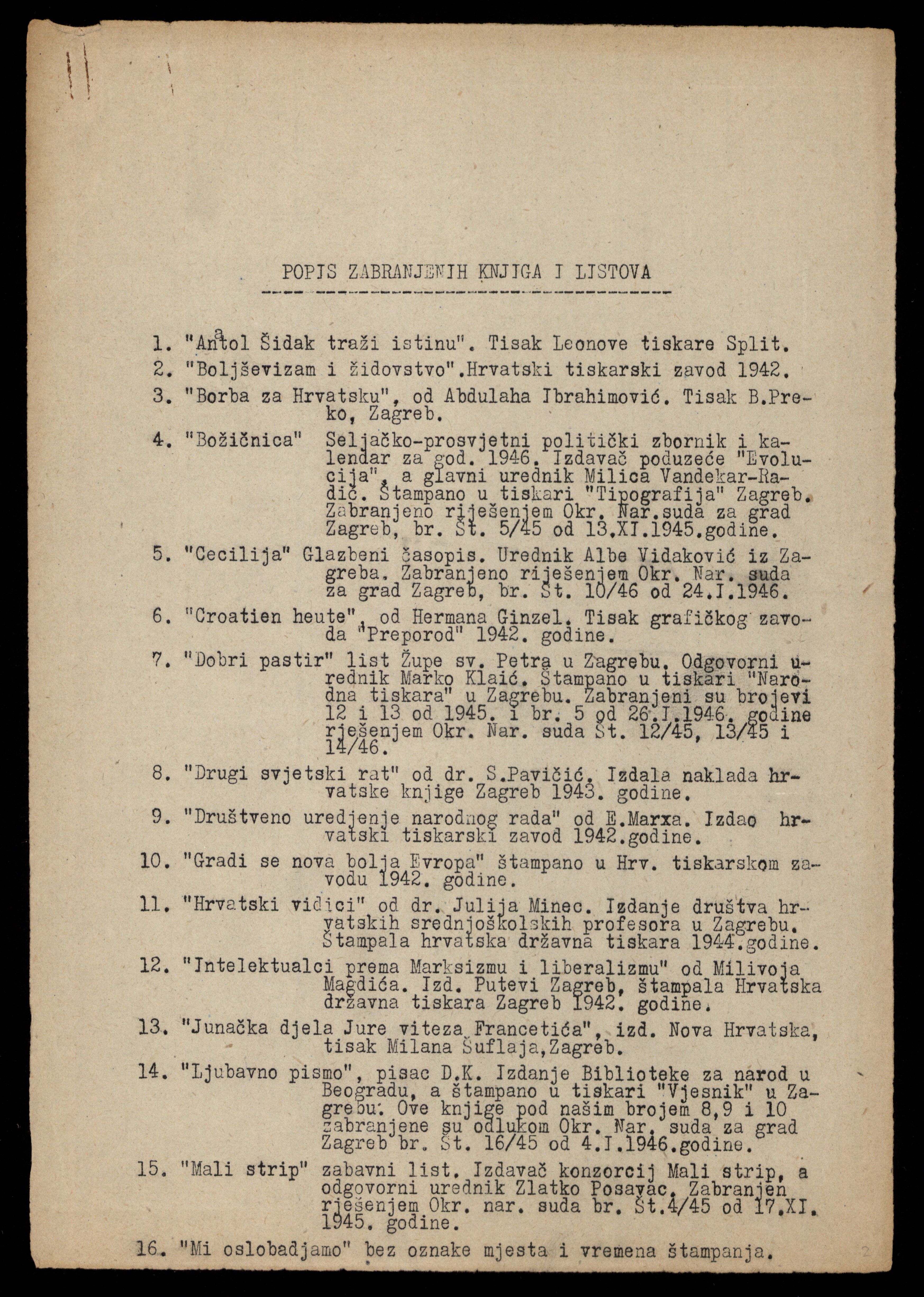

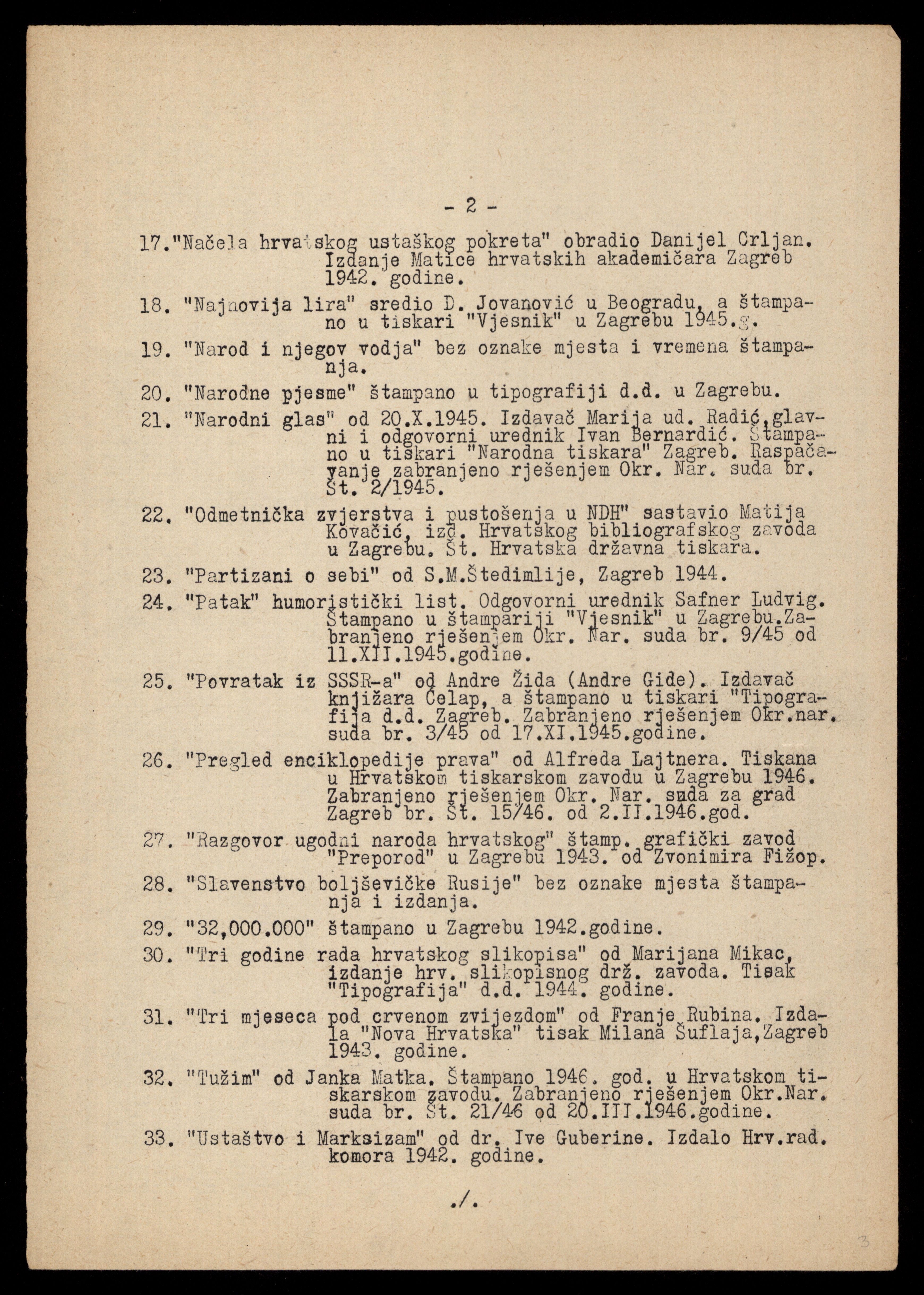
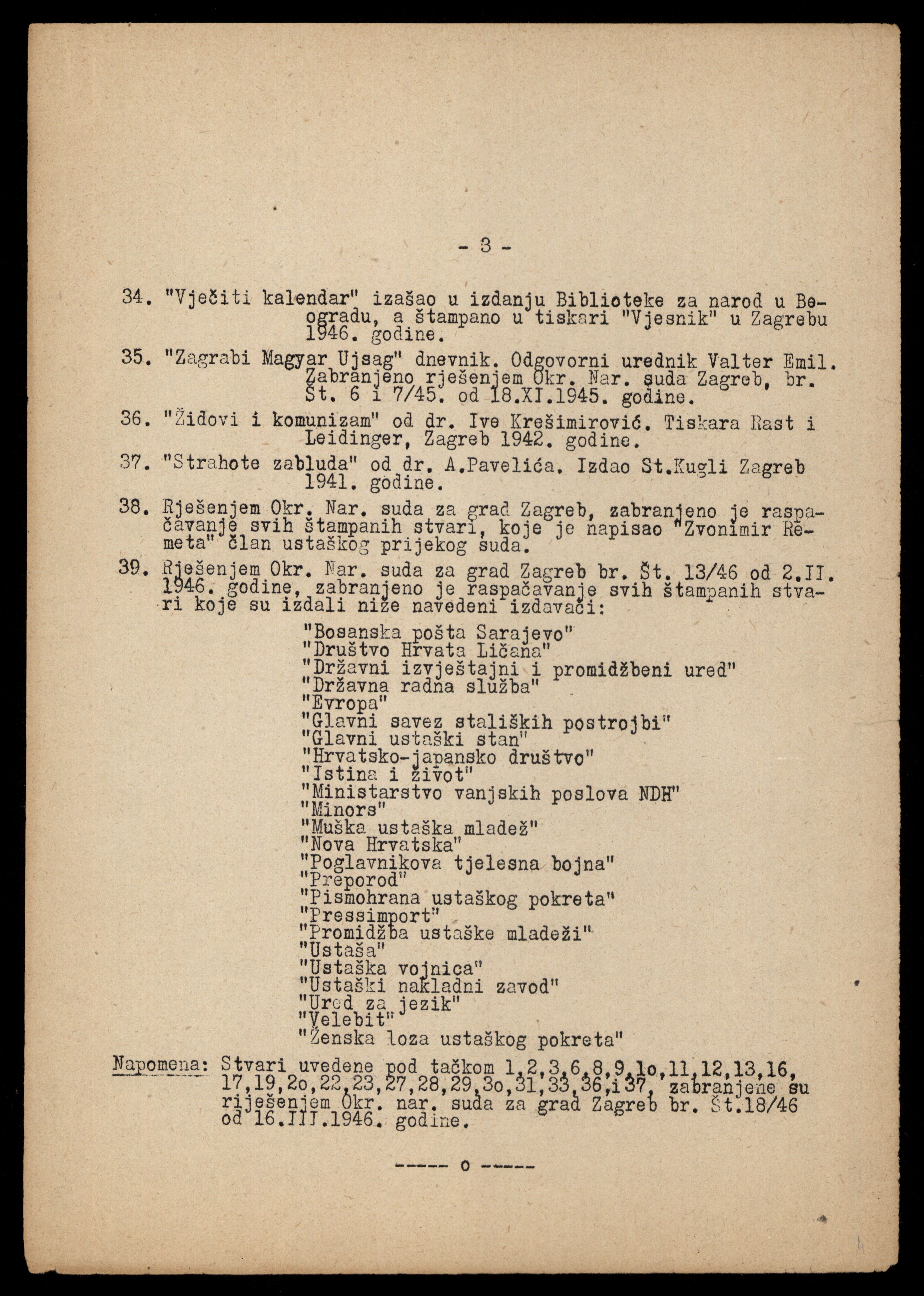
A List of Forbidden Books and Newspapers is a three-page document written on a typewriter at the District Public Court in Zagreb no later than on 16 March 1946. The list contains thirty seven book titles officially forbidden by the Zagreb District People’s Court from the autumn of 1945 until the spring of 1946 and two more passages, referring to a much larger number of blacklisted publications. The first passage lists all works by the Catholic author writer Zvonimir Remeta (1909–1964), and the second passage mentions the banned distribution of all publications issued by some twenty four publishers related to ustasha and fascist regimes (even referring to publications of the Croatian-Japanese Society). The list was apparently used to purge bookshops and libraries and was widely distributed.Iljko Karaman took possession of the document illegally from the Public Prosecutor's Office and kept it in his home collection, which in 1992 ended in the Croatian State Archives. The material is available for research and copying and was used in the publications by Deniver Vukelić and Josip Grbelja as sources for studying the postwar communist censorship.
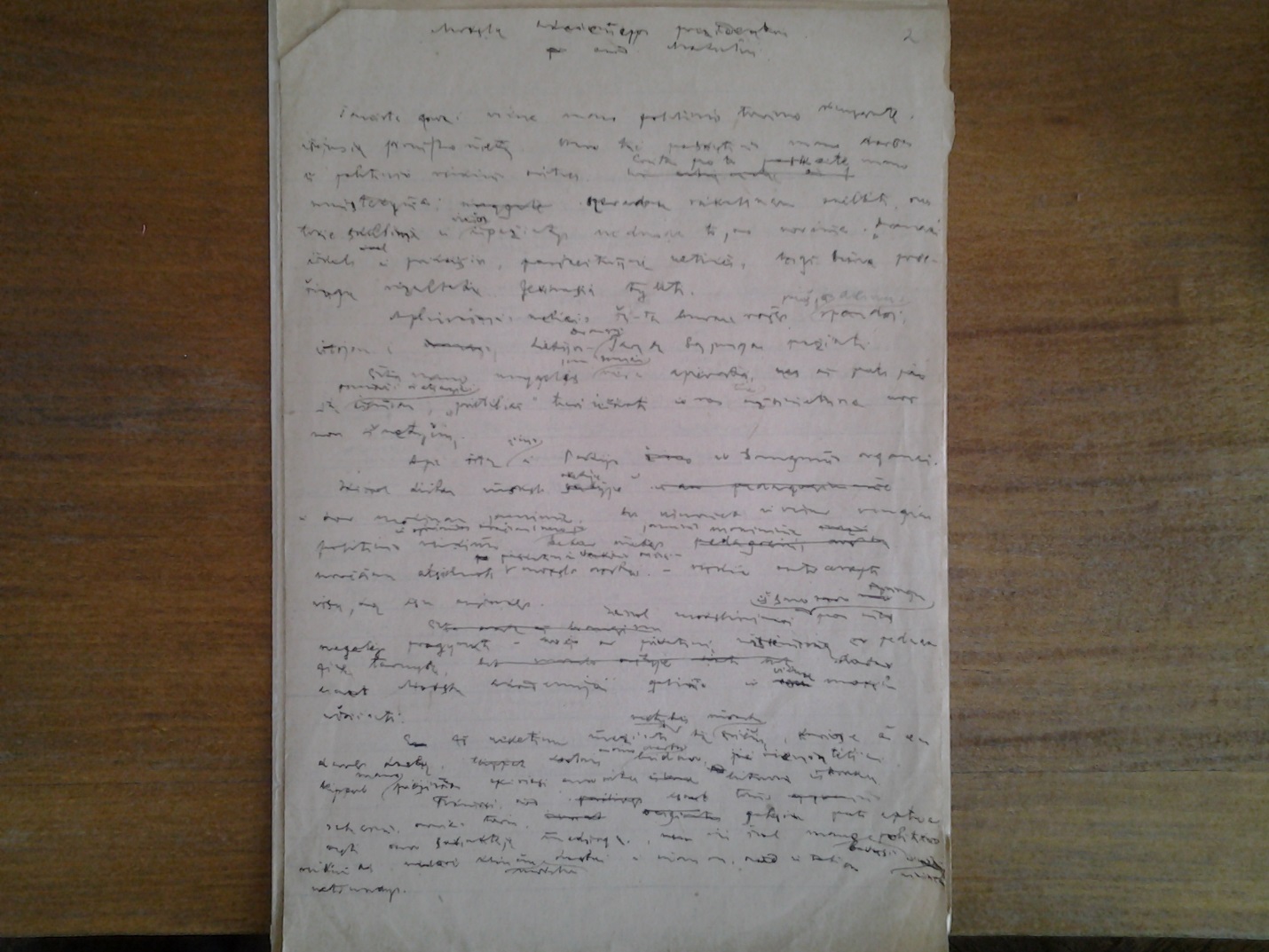

 Janulaitis' Letter to the President of the Academy of Sciences of Soviet Lithuania Juozas Matulis, 1946
Janulaitis' Letter to the President of the Academy of Sciences of Soviet Lithuania Juozas Matulis, 1946
Augustinas Janulaitis' letter to Juozas Matulis, the president of the Academy of Sciences of Soviet Lithuania, was written in 1946. The historian was attacked sharply by the Party authorities for his 'bourgeois nationalism', and in particular for the pamphlet 'Lithuania and Contemporary Russia', written and published in 1925. In the pamphlet, Janulaitis described very critically the political reality in Soviet Russia. He explained his stance in a letter to Matulis: why he was not 'self-critical', and did not openly recognise or regret his past 'political mistakes'. According to Janulaitis, the best way was just to 'keep silent', because nobody would believe him. On the other hand, he stated that he wanted to sort his collection, and his main aim was to carry out academic research.
The collection illustrates Anton Vovk's theological and pastoral work as a priest and bishop who led the Catholic Church in the Ljubljana Archdiocese despite being persecuted by the institutions under the control of the communist government. The Collection includes books, original manuscripts, the author's published articles and correspondence, showing Vovk's critical stance on Slovenia’s communist regime in the period until his death in 1963.
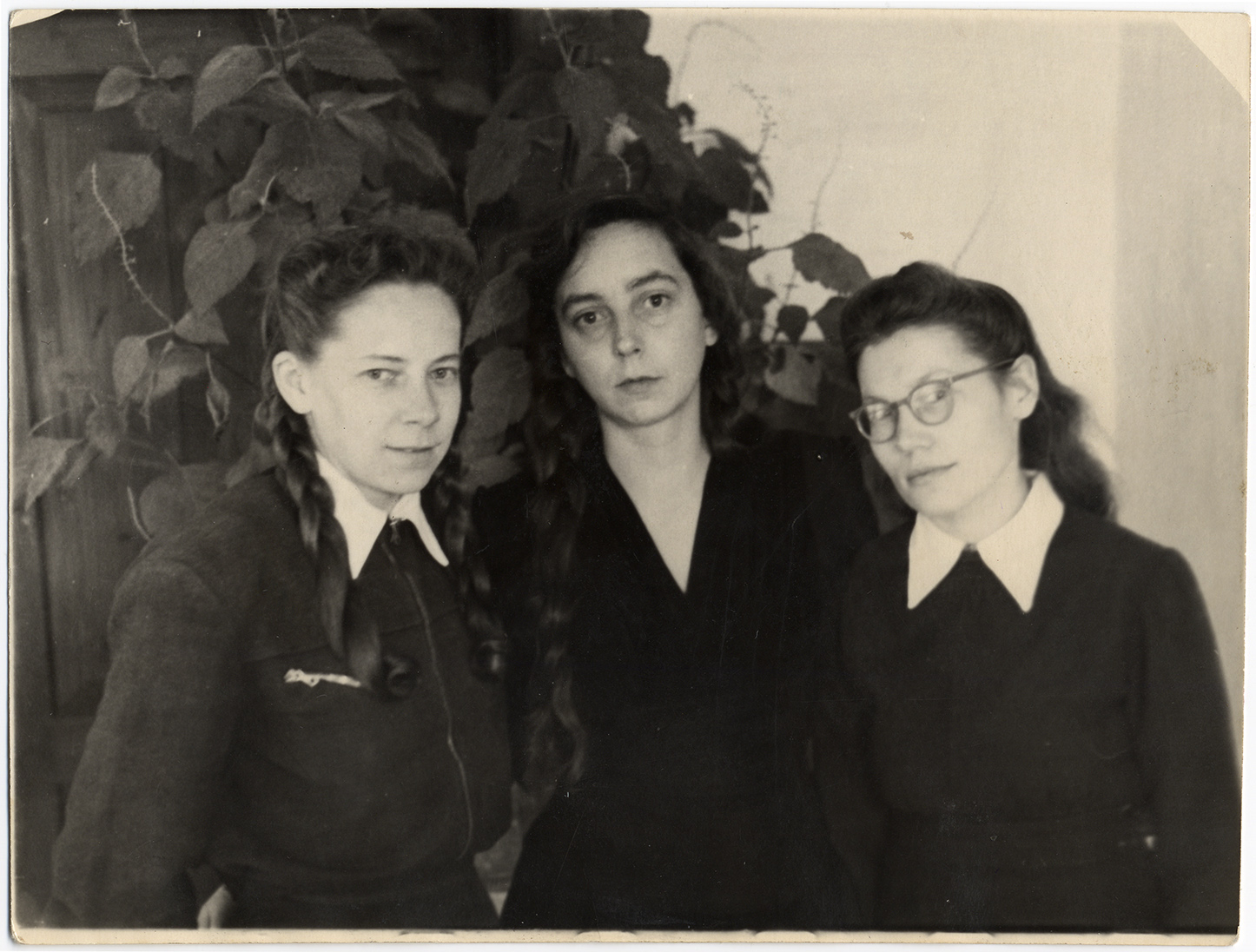

Broņislava Martuževa (1924-2012) was a poet and participant in the underground resistance to the Soviet regime. The main part of the collection consists of her correspondence after her release from prison in 1956 until 2000, as well as poetry written while she was living underground in 1946-1951 and in a prison camp in Siberia, copies of the handwritten patriotic periodical Dzimtene (The Motherland) of which she participated in the production in 1950 and 1951, and some other items.
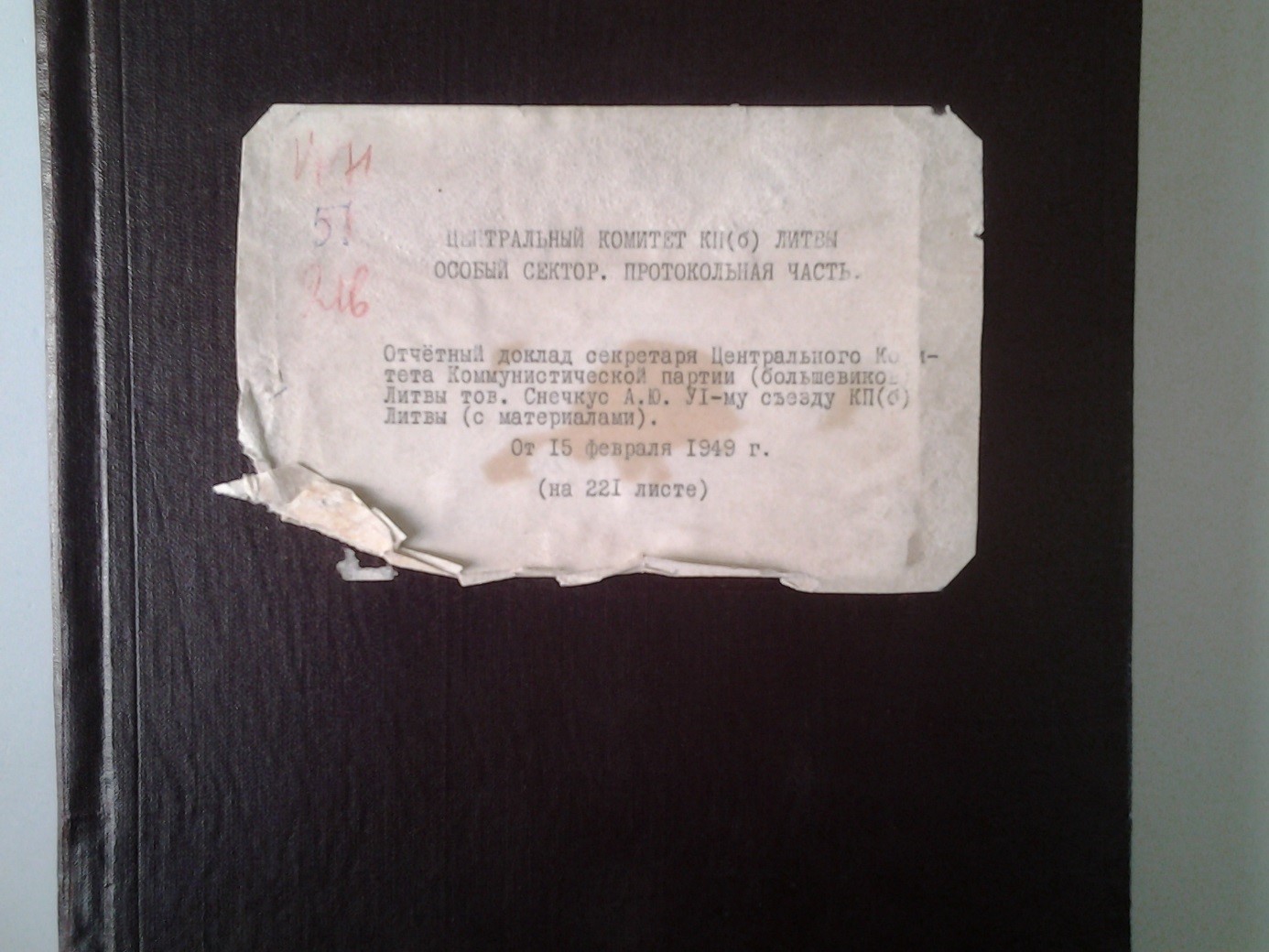

The collection gives much valuable information about the policy of the Lithuanian Communist Party Central Committee towards the Lithuanian national intelligentsia and the Lithuanian national heritage. The documents cover the most dramatic and repressive period in the history of Soviet Lithuania.
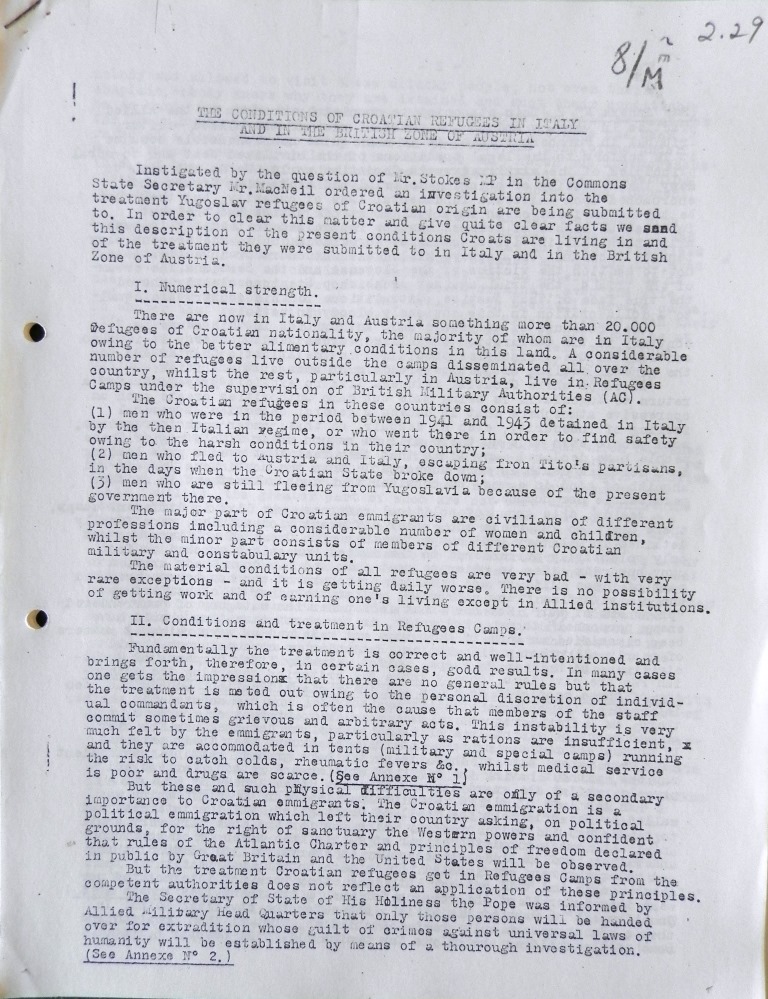

This document provides information on the status of Croatian refugees in Italy and the British zone of Austria after World War II. It is an unsigned document most likely drafted by the British Military Administration in Austria, probably in late 1946. It includes numerical estimates of refugees (20,000 Croatian refugees) in refugee and POW camps, as well as the testimonies about conditions and treatment in the camps and the information on the extradition of refugees to Yugoslavia.
These refugees fled from the units of the Yugoslav Army and managed to cross the Yugoslav-Austrian border and settle in Allied camps in Austria and Italy. The incentive for writing this document came from the Commons State Security.
Most of these refugees were civilians, including women and children. The British report shows the poor condition in which these refugees lived and their greatest fear - extradition to the new Yugoslav state.
Allied military headquarters informed the Secretary of State of the Holy See that in the future only those people whose guilt for crimes against humanity is determined after an in-depth investigation will be extradited to Yugoslavia.
The report has five appendices. These are four excerpts from letters written by Croatian prisoners in which they speak about their mistreatment at the hands of the Allied authorities. There is also the letter from the Secretary of State of the Holy See Giovanni Battista Montini (Pope Paul VI) on 17 May 1946 (Annex no. 2) addressed to an unknown person in the church, wherein he reflects about the criteria on which the Allied forces extradited Croatian prisoners to the Yugoslav authorities.
Krunoslav Draganović was almost in daily contact with these prisoners, and from them he collected valuable information and testimonies. This document collected by K. Draganović is valuable because Croatian historiography does not have much data on these events (Grahek Ravančić, 2014, 283-284).
The document is located in the file folder no. 1, under the designation no. 2.29. The use of the material is limited because it contains personal data that is subject to the provisions of the Personal Data Protection Act (Narodne novine 106/2012). Unrestricted access to them may be granted to a direct descendant of the person whose data are contained in a document. Others have limitations:- either 70 years must pass since the creation of the document or 100 years since the birth of the person to whom the document pertains.
